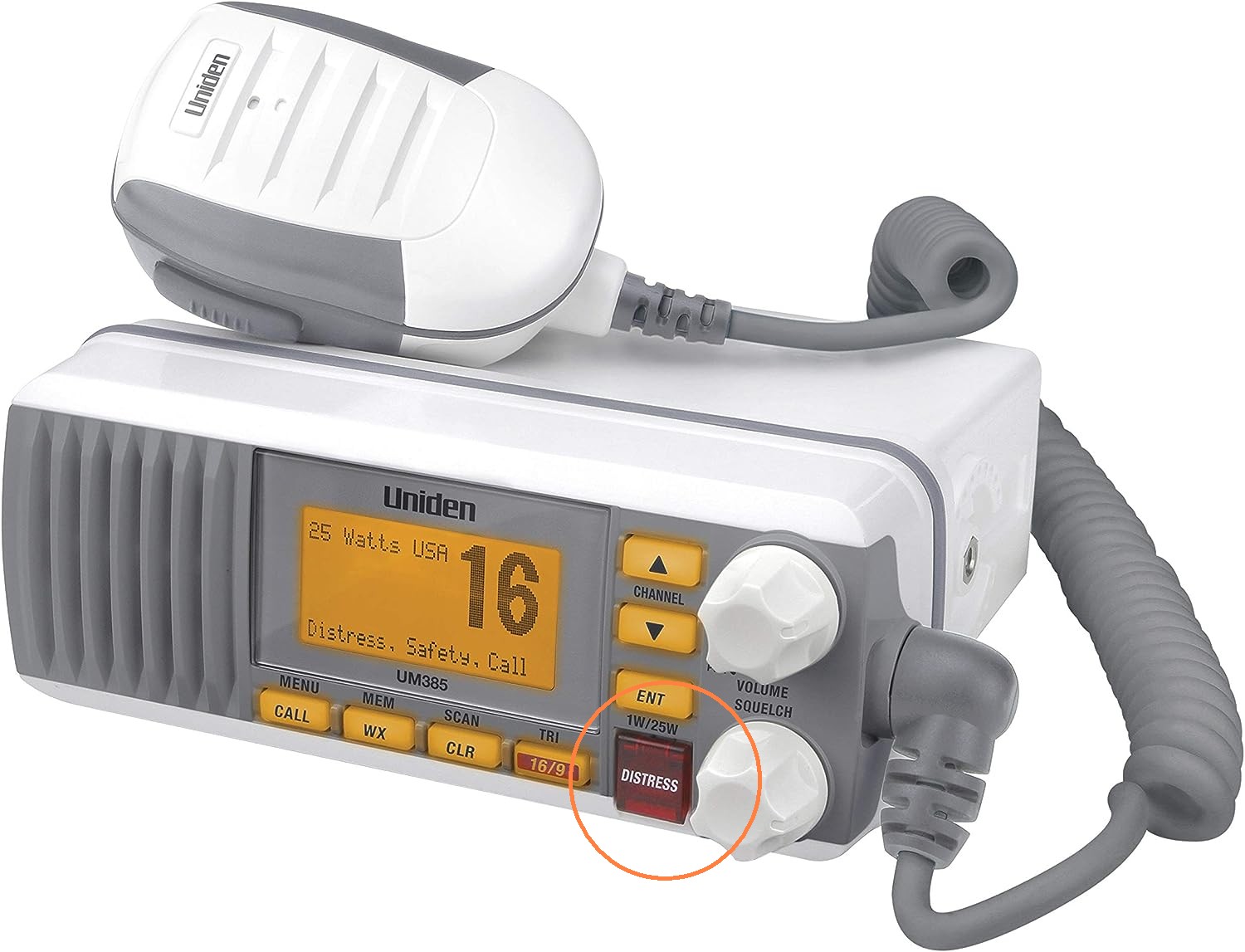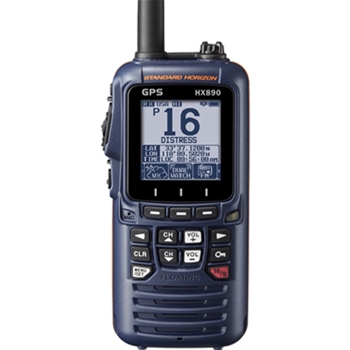VHF Radio
- Our boats are equipped with a VHF radio that can transmit at 25-watt power. It is important to understand the proper use of this device. Unlike a phone, communications on a VHF channel are public broadcasts that can be picked up by anyone with a VHF radio within a certain distance. Such communications are also regulated by laws.
- DSC is like 911 for your boat; better in fact, because rescuers have the technology to determine exactly who and where you are, and sometimes the exact nature of your emergency. But to make DSC work, boaters need three things: a DSC-equipped VHF, a connection to a GPS receiver (to pinpoint your position so rescuers can find you), and to register for a free MMSI Number (so they know who you are). Push one red button on your radio, and it automatically sends a distress message to everyone within radio range.
- Channel 16 (one-six) is reserved for emergency calls and for making initial contact with a vessel and agree on another channel to switch to, typically 68, 69, 71 or 72. Some channels, such as 13, are used by commercial operators. Everyone is expected to monitor channel 16 at all times. We use channel 69 for communication between the club boats on the water.
- There are three types of emergency calls you can make on VHF: May-day, pan-pan and securite, depending on the severity of the situation. You repeat three times the word matching the intent such as Mayday, mayday, mayday, and then mention the name of your vessel, a brief description, number of people on board, GPS position, and the nature of your emergency.
- If the radio has a DSC (digital selective calling) feature, uncover and push the DISTRESS button first. Then push the transmit button, take a deep breath, and speak clearly, calmly, and slowly.
Mayday Mayday Mayday
This is Akimbo, Akimbo, Akimbo, Mayday this is Akimbo
We are a half mile south of Fort Carroll.
Our position is 3-9 degrees, 1-2 decimal 4 minutes north, 0-7-6 degrees 3-1 decimal 2 minutes west.
Struck submerged object, Need pumps, medical assistance and tow.
Three adults, two children onboard. One person with a fractured arm.
Estimate can remain afloat two hours. Akimbo is 33 foot sailing vessel, white hull.
Over.

- It is illegal to make bogus emergency calls on a VHF radio. The US Coast Guard maintains a 24x7x365 watch of channel 16 for emergencies and giving out information. It is also an offense to use profanity on a VHF radio. Remember that everyone can hear you.
- Our skippers are required to carry a handheld VHF radio as a backup and monitor channel 16. Most of these devices can monitor two or more channels at the same time and will lock on when transmission is detected on one. Some handheld radios can float. We recommend that you attach the radio to your PFD.
- If you are in a position to help another mariner, you are required to help as long as doing so does not endanger your own vessel and crew
- Near shipping channels and harbors with commercial ship traffic, monitoring channel 13 could be helpful as they communicate with each other.
